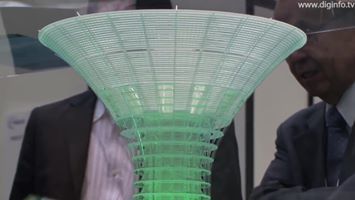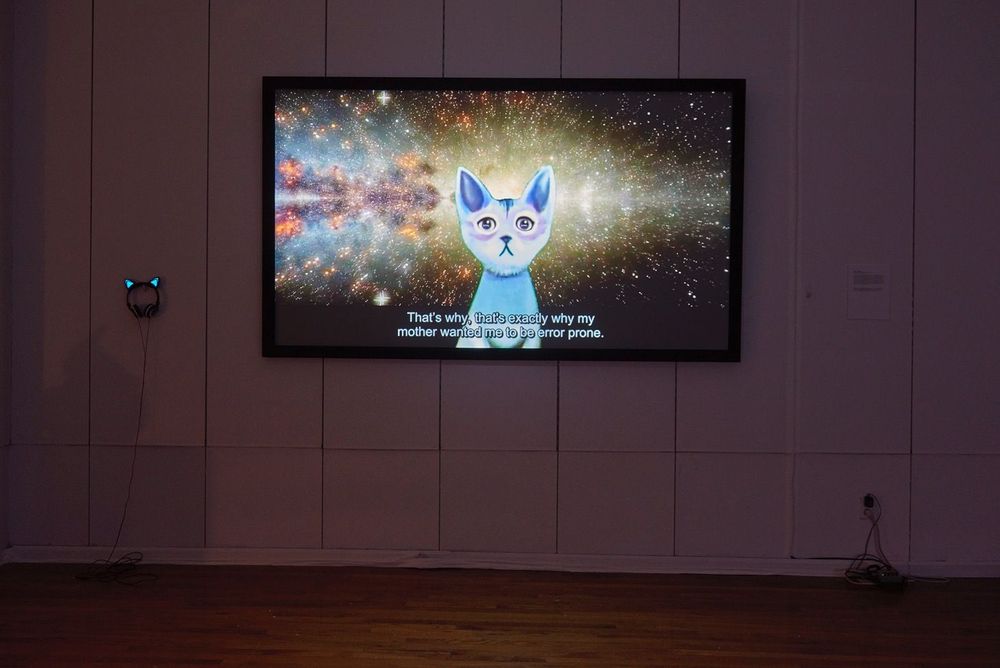Archive for the ‘habitats’ category: Page 78
Apr 17, 2020
Artificial Intelligence as a Godlike Tool for Experimentation
Posted by Quinn Sena in categories: habitats, robotics/AI, supercomputing
When we think of the interaction between mankind and any type of artificial intelligence in mythology, literature, and pop culture, the outcomes are always negative for humanity, if not apocalyptic. In Greek mythology, the blacksmith god Hephaestus created automatons who served as his attendants, and one of them, Pandora, unleashed all the evils into the world. Mary Shelley wrote the character named the Monster in her 1818 novel Frankenstein, as the product of the delusions of grandeur of a scientist named Victor Frankenstein. In pop culture, the most notable cases of a once-benign piece of technology running amok is the supercomputer Hal in 2001 Space Odyssey and intelligent machines overthrowing mankind in The Matrix. Traditionally, our stories regarding the god-like creative impulse of man bring about something that will overthrow the creators themselves.
The artificial intelligence-powered art exhibition Forging the Gods, curated by Julia Kaganskiy currently on view at Transfer Gallery attempts to portray the interaction between humans and machines in a more nuanced manner, showcasing how this relationship already permeates our everyday lives. The exhibition also shows how this relation is, indeed, fully reflective of the human experience — meaning that machines are no more or less evil than we actually are.
Lauren McCarthy, with her works “LAUREN” (2017) and its follow-up “SOMEONE” (2019) riffs on the trends of smart homes: in the former, she installs and controls remote-controlled networked devices in the homes of some volunteers and plays a human version of Alexa, reasoning that she will be better than Amazon’s virtual assistant because, being a human, she can anticipate people’s needs. The follow-up SOMEONE was originally a live media performance consisting of a four-channel video installation (made to look like a booth one can find at The Wing) where gallery-goers would play human versions of Alexa themselves in the homes of some volunteers, who would have to call for “SOMEONE” in case they needed something from their smart-controlled devices. Unfortunately, what we see at Forging The Gods is the recorded footage of the original run of the performance, so we have to forgo playing God by, say, making someone’s lighting system annoyingly flicker on and off.
Apr 17, 2020
Robots with insect brains
Posted by Genevieve Klien in categories: genetics, habitats, neuroscience, robotics/AI
It is an engineer’s dream to build a robot as competent as an insect at locomotion, directed action, navigation, and survival in complex conditions. But as well as studying insects to improve robotics, in parallel, robot implementations have played a useful role in evaluating mechanistic explanations of insect behavior, testing hypotheses by embedding them in real-world machines. The wealth and depth of data coming from insect neuroscience hold the tantalizing possibility of building complete insect brain models. Robotics has a role to play in maintaining a focus on functional understanding—what do the neural circuits need to compute to support successful behavior?
Insect brains have been described as “minute structures controlling complex behaviors” (1): Compare the number of neurons in the fruit fly brain (∼135,000) to that in the mouse (70 million) or human (86 billion). Insect brain structures and circuits evolved independently to solve many of the same problems faced by vertebrate brains (or a robot’s control program). Despite the vast range of insect body types, behaviors, habitats, and lifestyles, there are many surprising consistencies across species in brain organization, suggesting that these might be effective, efficient, and general-purpose solutions.
Unraveling these circuits combines many disciplines, including painstaking neuroanatomical and neurophysiological analysis of the components and their connectivity. An important recent advance is the development of neurogenetic methods that provide precise control over the activity of individual neurons in freely behaving animals. However, the ultimate test of mechanistic understanding is the ability to build a machine that replicates the function. Computer models let researchers copy the brain’s processes, and robots allow these models to be tested in real bodies interacting with real environments (2). The following examples illustrate how this approach is being used to explore increasingly sophisticated control problems, including predictive tracking, body coordination, navigation, and learning.
Apr 16, 2020
Hallucinogenic effects of LSD discovered
Posted by Brent Ellman in categories: habitats, neuroscience
Last Friday, April 16, 1943, I was forced to interrupt my work in the laboratory in the middle of the afternoon and proceed home, being affected by a remarkable restlessness, combined with a slight dizziness. At home I lay down and sank into a not unpleasant, intoxicated-like condition characterized by an extremely stimulated imagination. In a dreamlike state, with eyes closed (I found the daylight to be unpleasantly glaring), I perceived an uninterrupted stream of fantastic pictures, extraordinary shapes with intense, kaleidoscopic play of colors. After some two hours this condition faded away.
Apr 16, 2020
As more work from home, Dell unveils new BIOS shield
Posted by Saúl Morales Rodriguéz in categories: business, cybercrime/malcode, habitats
As millions of employees are suddenly working from home, computer security threats are on the rise. The sudden rush to set up home offices means many users working on insufficiently protected devices are exposing businesses to unprecedented new exposure to malicious hackers.
“While the world is grinding to a halt, cyber-attacks are on the rise, preying on public fear and anxiety,” says Yenni Tim, researcher of Cybersecurity at the University of New South Wales Business School in Sydney, Australia.
In an effort to combat security threats, Dell Technologies last week released a utility that will protect one of the most sensitive components of a computer, the BIOS. Frequently the target of the most malicious malware assaults, the BIOS oversees critical computer processes, from boot-up to system configuration parameters.
Apr 11, 2020
NASA’s Offering Online Astronaut Training While You’re Stuck in Lockdown
Posted by Fyodor Rouge in categories: habitats, space travel
Who hasn’t dreamt of escaping to the stars? Especially now, with most of us confined to limited spaces and steeped in tragic news.
NASA and the ISS National Lab are ready to help. They’ve developed a range of adventurous programs and activities for all the children stuck in home lockdown, including a training program to become a home astronaut, build a hovercraft, launch rockets, and many more.
Apr 8, 2020
Your child can become an astronaut and explore space from home
Posted by Genevieve Klien in categories: habitats, space
Let NASA and the International Space Station help inform and entertain your child from the safety and comfort of your own home. Both are sharing a wealth of activities and experiments for kids of all ages.
Apr 3, 2020
The Next Economic Meltdown Will Transfix The Real Estate Market As We Know It
Posted by Alex Vikoulov in categories: economics, finance, habitats
Are we in for the Big Short II? The cyclical nature of markets spells an eventual collapse of the real estate prices in the U.S. following the next global stock market meltdown and global recession which will be drastically different the next time around. For one, the coming collapse is about to start a secular declining trend in property values. Secondly, after the collapse, the prices of properties won’t be able to recover like they did after the previous “property market corrections.”
Why? I hope we all may agree that oil, for example, will never recover to all-time highs. Similar premises hold true for the existing home values. There are multiple major socio-economic structural changes on the horizon contributing to this permanent decline which is in the cards right now. Also, many conventional linear projections won’t even apply anymore.
THE NEXT “CYCLICAL” GLOBAL RECESSION — the world’s stock markets are the best indication of things to come in the economic milieu. The next financially engineered global recession may be the last effort by the capital-controlling elite of Wall Street to keep political and economic control over the global population and maintain the faltering capitalist system as long as possible;
Mar 30, 2020
Singapore could have a floating city to house 50,000 people
Posted by Maico Rivero in categories: governance, habitats

Singapore’s floating city could be real in 10 years.
Do you feel like Singapore is getting more crowded by the day? Apartment blocks are rising quickly everywhere, yet securing a home is still difficult for many.
Our land shortage problem is an age-old conundrum and having taller buildings isn’t going to help much anymore.
Mar 28, 2020
All rough sleepers in England ‘to be housed’
Posted by Brent Ellman in category: habitats
And just like that, the homeless were given homes! ❤.
Labour have welcomed the plan but said councils “need more support” and money to achieve it.
















